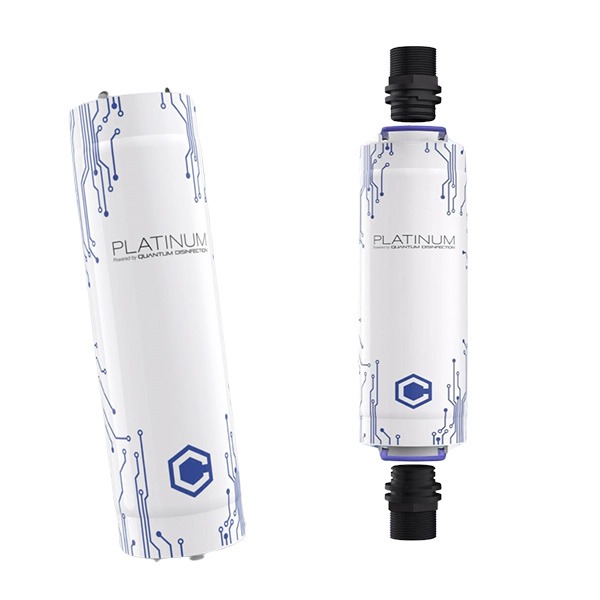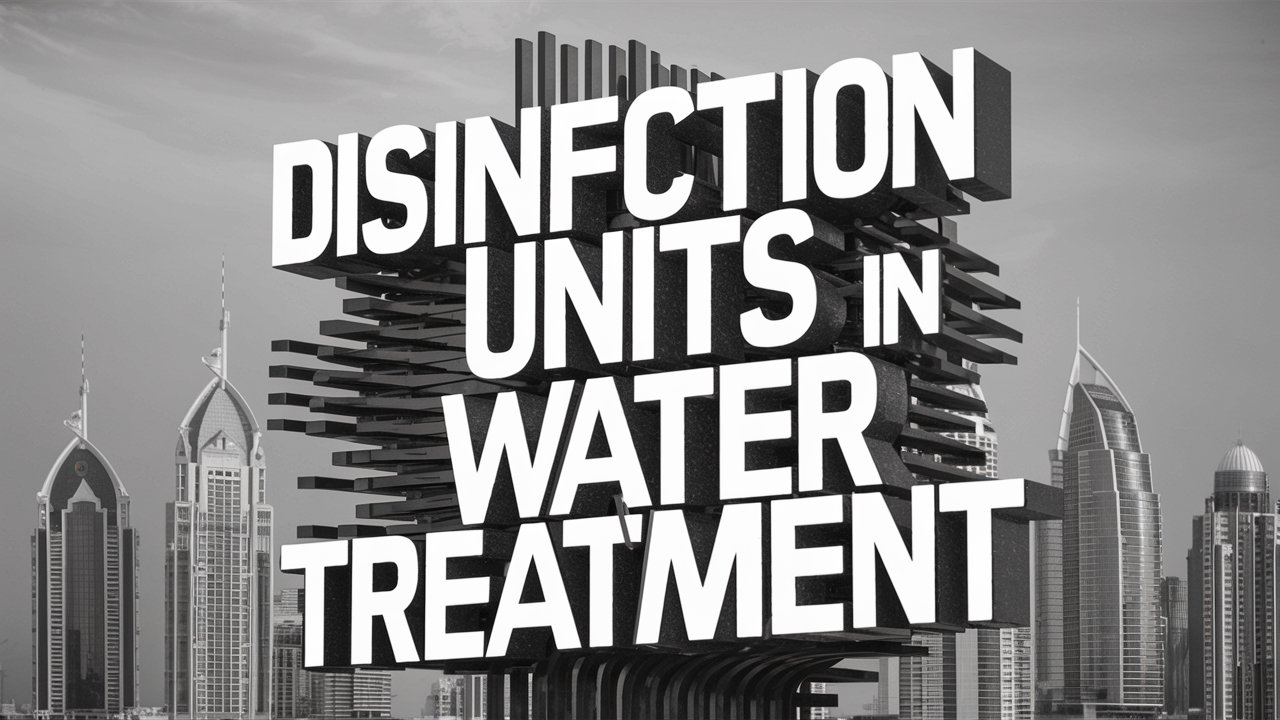BEST DISINFECTION SYSTEMS AND DISINFECTION UNITS IN WATER TREATMENT
Disinfection systems
Disinfection of drinking water is critical to the protection of public health. All water and wastewater systems should use some form of disinfection process to remove or inactivate microorganisms (pathogens) that can cause disease in humans and animals.
UV systems

Our UV system constructed with :
- High-Quality UV-C Lamps.
- High Transparency Quartz Sleeves resistant to temperature fluctuation.
- UV Radiation Chamber is SS 316 L electro-polished, remains unaffected by toxic environments.
- Compact designs, saving a significant amount of space.
- Long-lasting and less power consuming electronic ballasts, saving energy.
➜ We provide UV systems of market leading brands to protect the water for residential and commercial applications.
Quantum Disinfection systems

➜ MEA QD media is poised to become the new standard in tertiary wastewater disinfection, drinking water disinfection, cooling tower disinfection, stormwater disinfection, and many other types of fluid disinfection applications.
➜ Our QD systems are Chemical-free, power-free, maintenance-free, and extremely cost effective, works as a final disinfection solution for all fluid applications on any scale.
➜ Compared with UV, operators using MEA QD save an average of 31% annually.
➜ MEA QD is simple and operator-friendly due to its low maintenance.
➜ Ease installation
Copper-silver ionization

➜ Copper-Silver Ionization System is an innovative, chemical-free disinfection solution for potable water systems. It’s designed to quickly destroy Legionella and other waterborne pathogens and achieve long-term prevention without creating harmful byproducts or damaging plumbing equipment.
➜ Highly effective regardless of water temperature or complexity of plumbing system.
➜ Outperforms chemical and oxidative alternatives in controlling waterborne pathogens.
➜ Provides complete system disinfection within 48 hours.
➜ Does not dissipate rapidly in hot water for lasting protection .
We Provide the Best Disinfection Systems in UAE

In the realm of water treatment, ensuring water safety is paramount. One crucial step in this process is the utilization of Disinfection Units in Water Treatment, which serve as the frontline defense against waterborne diseases. In this guide, we will delve into the significance, types, and operation of Disinfection Units in Water Treatment, offering a rich and easily readable exploration of this vital topic.
Significance of Disinfection Units in Water Treatment:
Disinfection Units in Water Treatment play a pivotal role in safeguarding public health by effectively neutralizing pathogens such as bacteria, viruses, and protozoa. By incorporating Disinfection Units in Water Treatment processes, communities can mitigate the spread of illnesses and ensure the delivery of clean, potable water to consumers.
Types of Disinfection Units in Water Treatment:
Chlorination: Chlorine is commonly used in water treatment facilities due to its cost-effectiveness and efficiency in disinfection. The chlorination process involves the addition of chlorine gas, liquid chlorine, or chlorine compounds such as sodium hypochlorite to water, effectively killing harmful microorganisms.
Ultraviolet (UV) Disinfection: UV disinfection units utilize ultraviolet light to disrupt the DNA of microorganisms, rendering them unable to reproduce and causing their eventual demise. This environmentally friendly method is highly effective against a wide range of pathogens and does not introduce chemical by-products into the water.
Ozonation: Ozone, a powerful oxidizing agent, is employed in ozone disinfection units to eliminate microorganisms and organic contaminants from water. Ozone effectively neutralizes pathogens and reduces the formation of disinfection by-products compared to traditional chlorine-based methods.
Operation of Disinfection Units in Water Treatment:
Regardless of the type of Disinfection Units in Water Treatment used, the operation follows a similar sequence of steps:
Dosage Control: Precise dosing of disinfectants is essential to achieve optimal disinfection while minimizing chemical residuals.
Contact Time: Water must remain in contact with the disinfectant for a specified duration to ensure thorough microbial inactivation.
Monitoring and Control: Continuous monitoring of disinfection levels and water quality parameters allows operators to adjust dosage and maintain effectiveness.
Conclusion:
Disinfection Units in Water Treatment, integral components of water treatment processes, play a critical role in ensuring the safety and quality of drinking water. Understanding the significance, types, and operation of Disinfection Units in Water Treatment is essential for water treatment professionals and the general public alike. By employing appropriate disinfection measures, communities can safeguard public health and promote access to clean, potable water for all.


